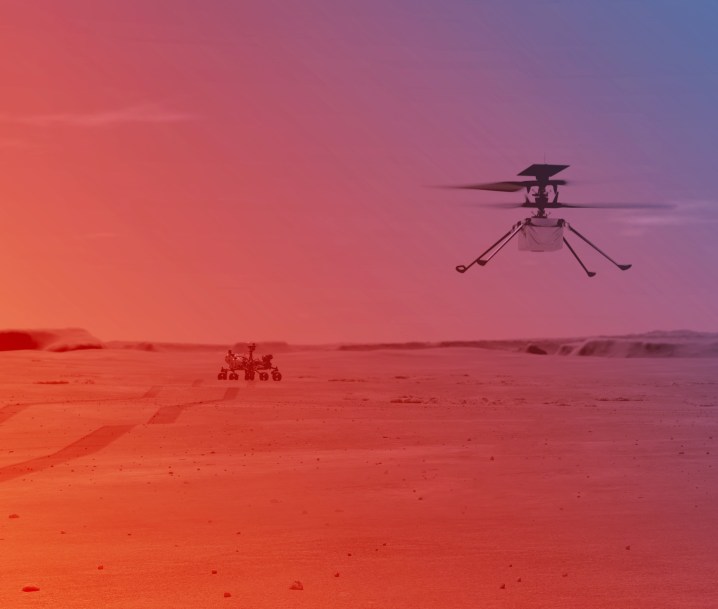
NASA has announced more details about the much-awaited first flight of the companion to the Mars rover Perseverance, the helicopter Ingenuity. The tiny helicopter will make its first flight no earlier than April 8, which will be the first time an aircraft has flown on another planet.
Right now, Ingenuity is still attached to the underside of the rover. Over the weekend, the debris shield which protected the bottom of the rover during landing was released, which is the first step in deploying the rover.
Now, the rover will drive to the chosen location, nicknamed the airfield, which is a flat, clear patch of ground from which the helicopter can safely take off. The rover will carefully deploy the helicopter onto the surface, then drive away to a safe distance to allow it to take off.
“Once we cut the cord with Perseverance and drop those final five inches to the surface, we want to have our big friend drive away as quickly as possible so we can get the sun’s rays on our solar panel and begin recharging our batteries,” said Bob Balaram, Mars Helicopter chief engineer at NASA’s Jet Propulsion Laboratory, in a statement.
Because this technology is so new, the team will be taking it slowly and checking on every step of the process. “As with everything with the helicopter, this type of deployment has never been done before,” said Farah Alibay, Mars Helicopter integration lead for the Perseverance rover. “Once we start the deployment there is no turning back. All activities are closely coordinated, irreversible, and dependent on each other. If there is even a hint that something isn’t going as expected, we may decide to hold off for a sol or more until we have a better idea what is going on.”
The plan is to keep the first flight simple, and then to perform increasingly complex maneuvers in future flights. For this first flight, the aim is for the helicopter to take off, to rise into the air until it reaches an altitude of three meters, to hover in place for 30 seconds and make a turn, and then to land.
That sounds simple enough, but on a Mars mission, even simple tasks are difficult. Due to the communication delay between Earth and Mars, NASA personnel can’t oversee the flight in real time. Instead, they must send a series of instructions to the helicopter, which will carry them out autonomously. The helicopter does this by taking images of the ground beneath it at a rate of 30 images per second, which it can use to track its movements over the surface. This image data is combined with data from its other sensors to make any small adjustments to keep it flying straight in the wind at a rate of 500 per second.
If everything goes as planned, there should be engineering data available about the flight within a few hours, and possibly even images and video captured by the rover. If it all looks good, the team can move onto planning for their next flight.
“Mars is hard,” said MiMi Aung, project manager for Ingenuity Mars Helicopter. “Our plan is to work whatever the red planet throws at us the very same way we handled every challenge we’ve faced over the past six years — together, with tenacity and a lot of hard work, and a little Ingenuity.”



